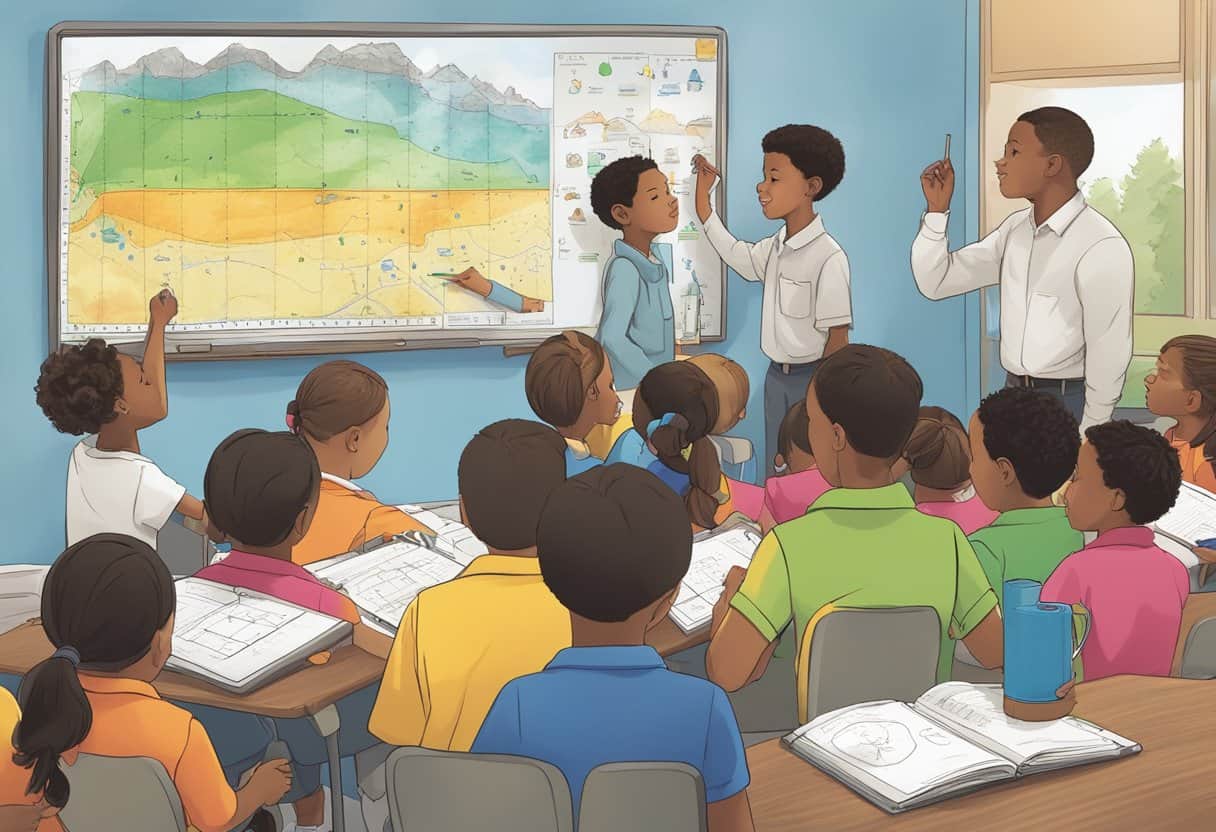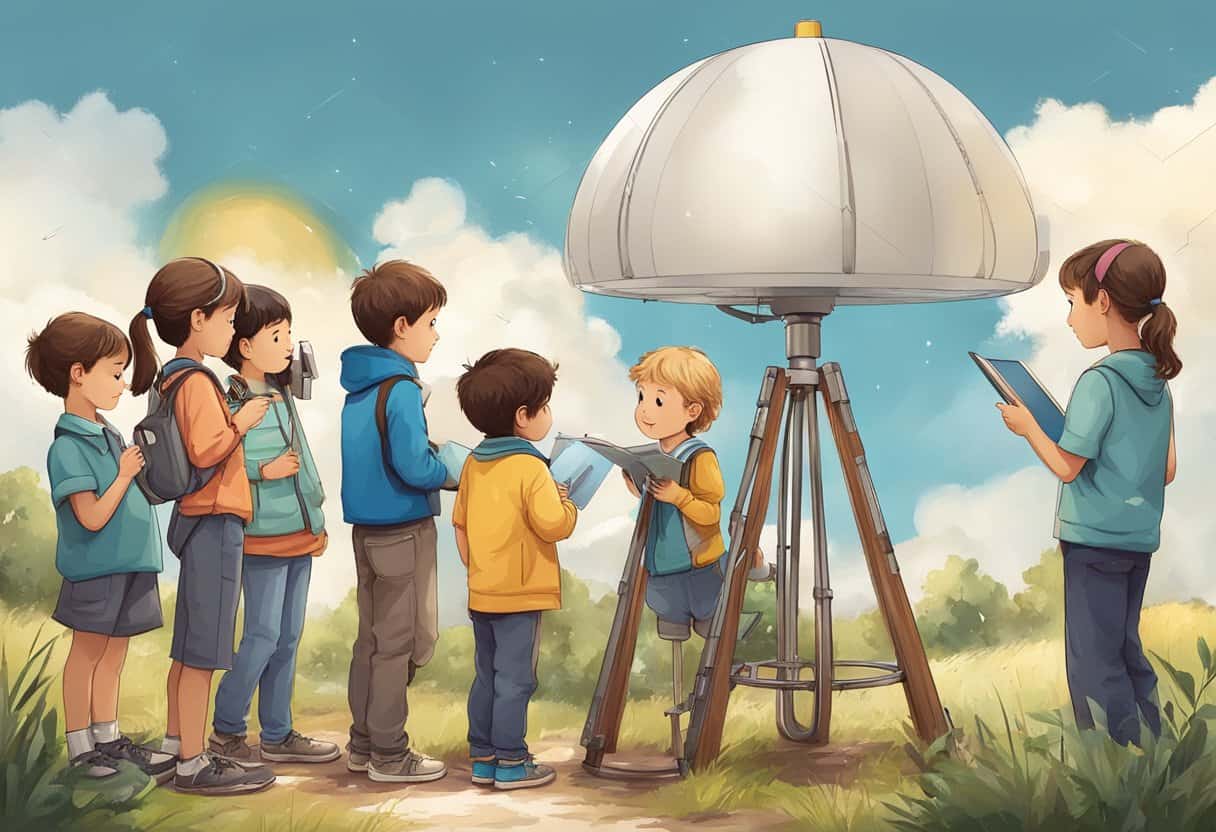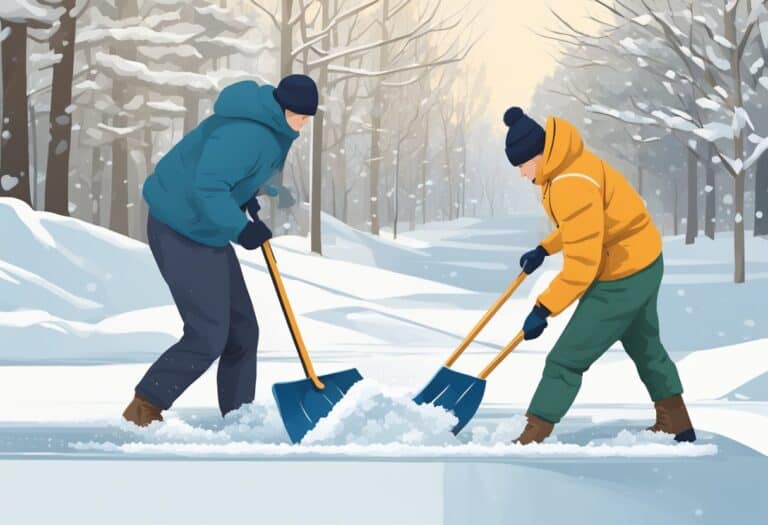Introducing children to the dynamics of weather through personal weather stations can ignite an early interest in science and nature by offering a hands-on educational experience.
These miniature meteorological marvels are not just tools for collecting data; they are gateways to curiosity and discovery. As both a fun and functional tool, kids’ weather stations provide an interactive way to learn about the environment, letting young minds explore phenomena such as temperature, wind speed, rainfall, and humidity right in their backyard.
By bringing weather patterns into a tangible format, children have the opportunity to observe, record, and predict atmospheric changes, fostering critical thinking and a deeper understanding of the world around them. Selecting a suitable weather station for your child involves ensuring that it is age-appropriate, user-friendly, and equipped with the features that will keep them engaged.
With the right weather station, education transcends the walls of a classroom, becoming a continuous, interactive, and enjoyable process.
Kids’ weather stations turn learning into an engaging, hands-on experience, enabling children to explore and understand weather phenomena like temperature, wind, and rainfall. These tools foster curiosity, critical thinking, and a deeper connection with the environment, making science both fun and accessible outside the classroom.
Understanding Weather Stations
Weather stations are vital for gathering environmental data. Understanding how they work helps you interpret weather science and patterns more accurately.
Components of a Weather Station
Your basic home weather station typically includes several key tools:
- Thermometer: measures the temperature.
- Anemometer: gauges wind speed.
- Wind Vane or Weather Vane: determines wind direction.
- Barometer: tracks barometric pressure to forecast changes in weather.
- Rain Gauge: collects and measures rainfall.
- Humidity Gauge: assesses air moisture levels to report humidity.
- Advanced models might also measure UV levels, solar radiation, dew point, and atmospheric pressure.
The Science Behind Measurements
The science of meteorology relies on observations. Here’s what happens inside your weather station:
- Sensors obtain data, ensuring accuracy; for instance, a humidity gauge measures moisture to calculate the dew point.
- The barometer detects changes in atmospheric pressure, offering insights into upcoming weather patterns.
- Measurements like temperature, humidity, and wind speed are constantly monitored, facilitating an understanding of local climate behavior.
Types of Weather Stations
Various weather stations serve different purposes, ranging from simple to professional setups:
- Home Weather Stations are user-friendly, often included in educational kits like the 4M Weather Station Kit.
- The Ambient Weather WS-2902 is a choice among the best weather stations for enthusiasts due to its comprehensive data collection.
- For precision and durability, professional-grade options like the Davis Vantage Vue or Davis Instruments 6250 Vantage Vue are highly regarded.
Each has unique features, but all aim to provide a comprehensive look at the weather.
Selecting a Kids’ Weather Station
When choosing a weather station for kids, consider options that balance education and entertainment with simple design and accurate readings.
Criteria for Choosing
Education: Your primary goal should be to select a weather station that serves as an educational tool, helping to measure various weather elements in a way that’s accessible to children. Look for features that simplify complex meteorological data into understandable formats.
- Accuracy: A good weather station for kids should provide accurate results to encourage trust and interest in meteorology.
- Design: Opt for a design that is both appealing and appropriate for kids, often colorful and robust to withstand handling.
- Durability: Since it’s for kids, durability is key. The device must resist the occasional drop or bump.
- Fun: The ideal weather station also includes features for entertainment, such as interactive experiments or games related to weather prediction.
- Balance: Ensure there’s a balance between an easy-to-use interface and the richness of the educational content.
- Cost: Budget is always a concern, so weigh the features against the cost to determine the best value.
Popular Weather Stations for Kids
-
SmartLab Toys Storm Watcher Weather Lab: This station emphasizes hands-on learning with exciting experiments. It’s designed to make learning about weather fun and interactive.
-
Be Amazing! Toys Weather Science Lab: Known for its educational value, this kit allows kids to conduct experiments and learn about different weather phenomena in a simple, engaging way without overwhelming them.
When you’re selecting the best weather station for your child, look for one that combines simplicity in design with enough detail to be educational. The perfect weather station for kids should turn observing the weather into a fun and engaging activity while also being a tool that lasts, providing accurate measurements that can build a foundation for a lifelong interest in the sciences.
Educational Benefits

By integrating kids weather stations into education, you provide a robust foundation in meteorology and enhance STEM (Science, Technology, Engineering, and Mathematics) learning. These tools offer practical hands-on experience, fostering a deeper understanding of weather patterns and Earth science concepts.
Learning Meteorology
Understanding meteorology begins with observations and measurements. Using weather instruments like anemometers and barometers, you can track wind speed and air pressure. This hands-on approach not only makes weather phenomena like precipitation and the greenhouse effect more tangible but also encourages the development of observational skills. Through these experiments, you learn to record and analyze data, laying the groundwork for a potential career in meteorology.
STEM and Earth Science Integration
Incorporating weather stations provides a seamless integration of Earth science into STEM education. You’ll get acquainted with meteorological instruments and learn how they function to measure different aspects of the weather. Engaging in this form of applied science, you grasp key concepts such as the water cycle and its impact on climates and ecosystems. The hands-on experience from these activities serves to solidify your understanding of theoretical principles and their real-world applications.
Interactive Activities and Experiments
Engaging in hands-on projects and data analysis allows you to grasp weather concepts practically. Through interactive activities and experiments, you’ll learn how to collect and interpret weather data, deepening your understanding of meteorological science.
Weather-Related Projects
Participate in weather-related projects to build a fundamental understanding of atmospheric phenomena. Constructing a DIY weather station is an excellent start. Equip it with sensors to measure temperature, humidity, and precipitation. Use simple materials like plastic bottles and cardboard to create rain gauges and anemometers.
Experiment with weather science through activities that investigate the water cycle and cloud formation. For instance, you can simulate cloud formation using a jar, hot water, ice, and aerosol particles, illustrating condensation and precipitation processes. Incorporating an LCD color display into your homemade weather station can make reading the data simpler and more engaging.
Recording and Analyzing Data
Recording your observations in a weather journal is vital for analyzing patterns over time. Measure data such as temperature daily and log it.
Create charts and graphs from your data to visualize trends:
- Daily Temperature Chart: Record and plot the temperature at the same time each day.
- Precipitation Graph: Track the amount of rainfall each week and compare the results to local weather service data.
Regularly analyze the data you’ve gathered with your weather station. Look for changes over weeks or months, and draw conclusions about local weather patterns. Using the data, conduct experiments on how weather changes impact your local environment.
By engaging in these interactive activities and tracking your findings, you’ll develop a deeper understanding of meteorology and its relevance to everyday life.
Advancing with Additional Sensors
When configuring kids weather stations, adding additional sensors is a pivotal step in enhancing both the educational value and scientific precision of the device. These expansions not only serve to improve accuracy but also foster a deeper understanding of environmental conditions.
- Temperature and Humidity: Most basic weather stations include these sensors, but advanced models might offer greater precision and quicker response times.
- Wind Speed and Direction: Essential for understanding weather patterns, additional anemometers and wind vanes can be integrated.
- Rain Gauge: By tracking rainfall, children can learn about precipitation patterns and water cycles.
- UV Index Sensors: Offer insights into sun safety and the effects of solar radiation.
As you expand the range of measurements, the weather station grows into a more comprehensive educational tool. Children can learn about atmospheric pressures and air quality—factors that directly influence weather and human health—by integrating sensors that detect these elements. Here is an example where a study involving school children using tags integrated with sensor nodes offer a hands-on approach to learning about their environment.
The reliability of a kids weather station depends not only on the quality of the sensors but also on regular calibration and maintenance. This introduces an important responsibility and learning opportunity for maintaining data integrity. By choosing a system designed with expandability in mind, your weather station can grow alongside the child’s curiosity, maintaining both engagement and educational value through successive levels of complexity.
Caring for Your Weather Station
To ensure the longevity and accuracy of your weather station, regular maintenance is crucial. Below you will find specific steps to keep your system in top condition.
Maintenance Tips
Regular Cleaning: Dirt and debris can affect the sensors of your weather station, leading to inaccurate readings. Gently wipe the exterior components with a soft, damp cloth every few months. For delicate parts, use compressed air to remove dust without touching the sensors.
Sensor Inspection: Examine the sensors for any signs of corrosion or damage. If you spot any issues, refer to your weather station’s manual for guidance on repairs or replacements.
Battery Check: Replace the batteries annually, or as recommended in the product manual, to prevent power loss. Consider using lithium batteries for their longer lifespan, especially in colder climates where battery performance can degrade more quickly.
Firmware Updates: Keep the firmware of your weather station updated. Manufacturers often release updates that improve functionality and fix bugs. Check the manufacturer’s website for the latest firmware versions.
Secure Placement: Ensure that your weather station is securely mounted and that all screws and brackets are tight. This not only improves durability but also prevents damage from strong winds or adverse weather conditions.
UV Protection: To reduce wear from sunlight, position your weather station away from direct UV rays when possible, or use a protective cover designed to mitigate UV exposure.
By following these maintenance tips, you extend the durability of your weather station and ensure the accuracy and reliability of the data it provides. Remember to consult your user manual for specific care instructions tailored to your model.
Weather Station as a Learning Tool
Weather stations offer a practical approach to education, combining fun and hands-on experience with science learning. They serve as an excellent tool to ignite a passion for science in younger children by enabling them to observe and predict weather patterns directly.
Instilling Passion for Science
Your child’s innate curiosity about their environment can be fostered through the use of a weather station for kids. By providing real-time feedback on weather conditions, these stations make learning science interactive and engaging. As your child records and analyzes data, they gain a deeper appreciation for the natural world, which could inspire a lifelong passion for science and possibly lead to a future career in the field.
Understanding the Laws of Physics
A hands-on experience with a weather station can demystify complex concepts, making them tangible for learners. As younger children observe changes in temperature, wind speed, and atmospheric pressure, they gain a practical understanding of the laws of physics. This concrete learning method helps solidify theoretical science concepts, often leading to a more profound comprehension than traditional teaching methods might offer.
Predicting Weather Phenomena
Learning to predict weather phenomena like rain, storms, or even a tornado is within reach when using weather stations. You can watch patterns emerge and learn how meteorologists forecast the weather. This predictive aspect not only teaches important skills in data analysis and critical thinking but also highlights the importance of being prepared for various weather-related situations.
Frequently Asked Questions
Selecting a weather station for children or integrating one into educational settings can enhance learning and spark interest in meteorology. Here are some common questions answered to help you navigate the options and uses of weather stations in educational contexts.
What features should I look for when choosing a weather station for children?
When selecting a weather station for children, look for user-friendly interfaces, durable construction, and real-time data display. It’s important to have sensors for temperature, humidity, and barometric pressure, which are fundamental for understanding weather patterns.
How can educational weather stations benefit a child’s learning experience?
Educational weather stations give children hands-on experience with observing and recording weather data, reinforcing lessons in science, mathematics, and geography. This practical approach can boost critical thinking and data analysis skills.
Can you recommend some top-rated weather stations suitable for school use?
Devices like the AcuRite Pro Weather Station come highly recommended for school use due to their comprehensive data collection capabilities, ease of installation, and robust build suitable for handling frequent use by students.
What are creative ways to engage kids in learning about meteorology through DIY weather stations?
Creating a DIY weather station project offers a rich opportunity for kids to engage with meteorology by building instruments like anemometers or barometers, learning about weather measurement, and connecting with the environment.
How do schools typically utilize outdoor weather stations in their curriculum?
Schools often integrate outdoor weather stations into the curriculum by having students collect and analyze weather data, participate in climate studies, or even report on the weather as part of a student-led news segment, thereby introducing them to scientific research methods.
What are some fun weather station-related activities for elementary students?
Elementary students can enjoy activities such as charting daily weather patterns, predicting the weather, and comparing their local weather data to global patterns. Projects like these not only make learning fun but also teach valuable lessons about the environment and weather systems.







